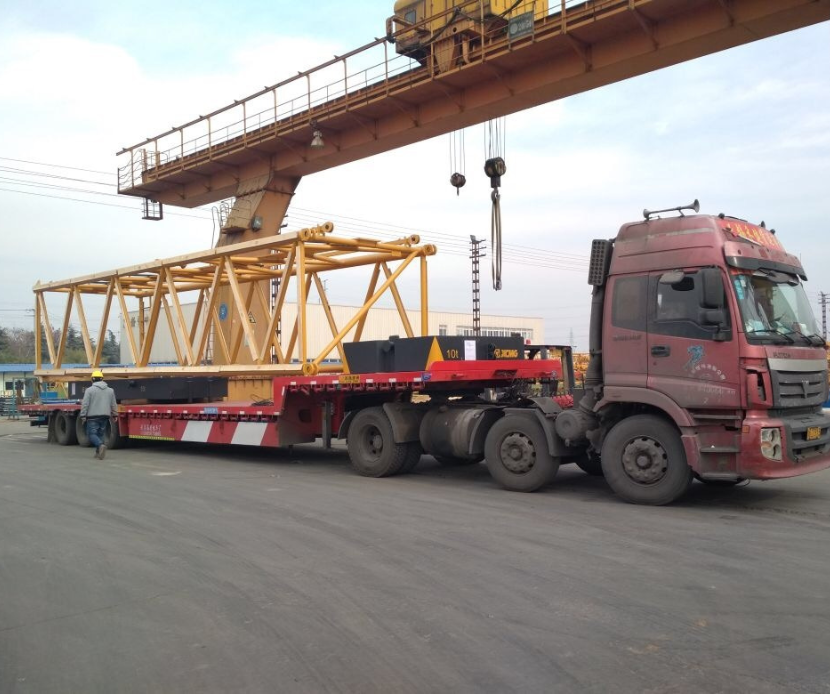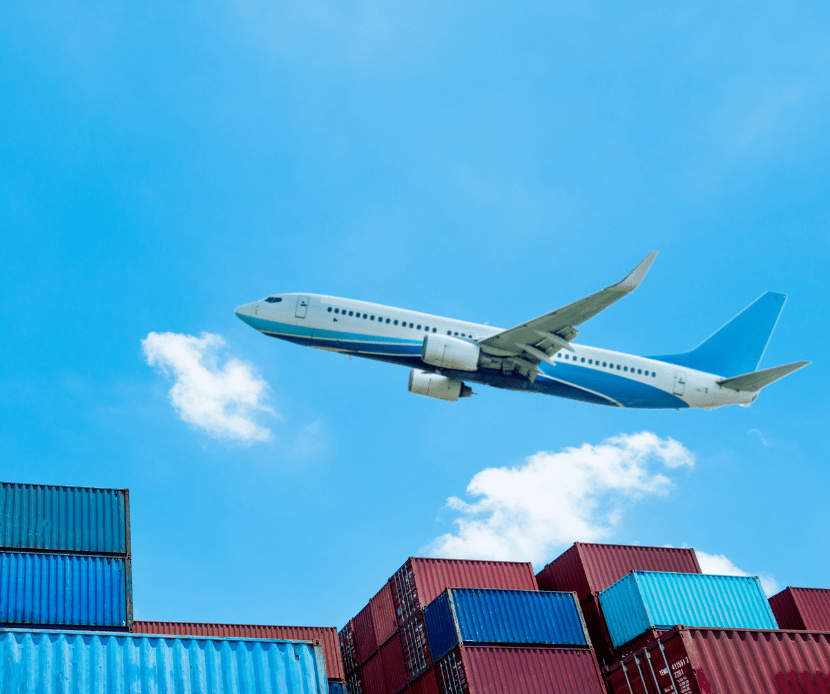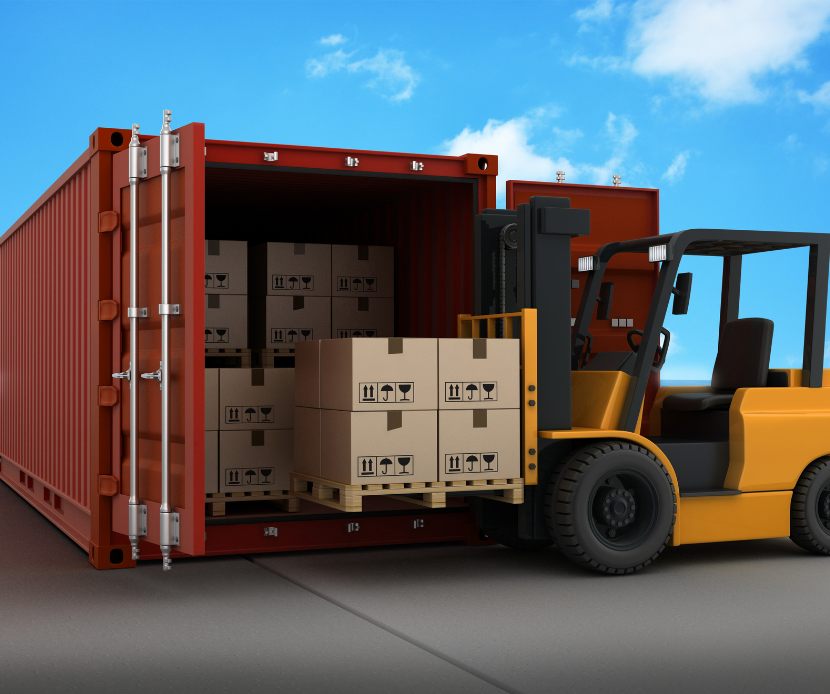


Introduction: Unlocking the Power of E-commerce Logistics
In the dynamic world of online shopping, logistics emerges as a formidable and indispensable force. This journey embarks on the profound role that logistics plays, revealing its significance not merely as a supporting actor but as the very cornerstone driving the monumental expansion of e-commerce. Join us as we delve into the intricacies of e-commerce logistics, unraveling its transformative influence on the digital retail landscape.
E-commerce logistics is a multifaceted domain crucial for the seamless operation of online retail. Here's an expanded view of its core principles:
Comprehensive Management Process
Involves overseeing the entire lifecycle of products from the supplier to the end customer.
Includes coordination with suppliers, inventory control, and order processing.
Efficient Storage and Warehousing
Strategic storage of products in warehouses to optimize space and accessibility.
Utilizes modern warehousing techniques for easy retrieval and dispatch.
Seamless Transportation and Delivery
Ensures timely and safe delivery of products to customers.
Incorporates various modes of transport, including road, air, and sea, to facilitate global reach.
Complex Network Integration
Connects multiple stakeholders including manufacturers, sellers, logistics providers, and customers.
Requires synchronization of operations across different entities for smooth functioning.
Customer-Centric Approach
Prioritizes customer satisfaction through timely deliveries and high-quality service.
Includes tracking systems for customers to monitor their orders in real-time.
Digitalization and Technology Use
Leverages technology for automation in inventory management, order processing, and tracking.
Adopts advanced software solutions for real-time data analysis and decision-making.
Adaptability and Scalability
Flexible to adapt to varying demands, seasonal fluctuations, and market trends.
Scalable to handle different volumes of orders and expand as the business grows.
In recent years, the e-commerce industry has experienced explosive growth, fundamentally reshaping the landscape of logistics and supply chain management. This surge in online shopping has had profound implications for the logistics sector:
Exponential Growth: The rise of e-commerce has led to exponential growth in demand for logistics services. With more consumers opting for online shopping, the volume of goods to be transported has soared.
Need for Speed: Customers now expect quicker deliveries, often with same-day or next-day options. This has forced logistics providers to invest in efficient and rapid delivery mechanisms.
Last-Mile Challenges: The "last mile" of delivery, the final leg from distribution centers to customers' doorsteps, has become a focal point. It's where efficiency matters most and innovations like delivery drones and autonomous vehicles are being explored.
Reverse Logistics: With the convenience of online shopping comes the need for efficient returns, a process known as reverse logistics. This has created a new dimension of logistics management.
Warehousing Demand: E-commerce growth has driven a surge in the demand for warehousing and storage space. Companies require facilities strategically located for quick order fulfillment.
Technology Adoption: To keep up with the fast-paced e-commerce world, logistics companies are adopting advanced technologies such as AI, IoT, and data analytics for route optimization and inventory management.
Sustainability: The industry is increasingly focusing on sustainability, exploring eco-friendly delivery options and green logistics practices to reduce its environmental impact.
E-commerce logistics is a multifaceted domain that relies on various key components to function seamlessly. Let's examine these fundamental building blocks:
Central to E-commerce Logistics: Inventory management is at the heart of e-commerce logistics. It involves tracking and controlling the quantity, location, pricing, and mix of products available in your business.
Availability and Readiness: It ensures that products are readily available in stock and prepared for dispatch as soon as an order is placed.
Demand Forecasting: Predicting customer demand is vital to prevent stockouts and overstock situations, optimizing inventory levels.
Strategic Warehousing
Effective Storage: Warehousing plays a pivotal role in e-commerce logistics. Efficient storage of goods is crucial for reducing delivery times and operational costs.
Location Matters: Warehouses need to be strategically located to minimize transportation costs and provide quick access to major markets.
Inventory Visibility: Modern warehousing often involves advanced technology, enabling real-time visibility into inventory levels and order fulfillment.
Selection and Packaging: This component involves the selection of ordered products from the inventory, careful packaging to ensure product safety, and labeling for accurate shipping.
Shipping Logistics: Determining the most cost-effective and timely shipping methods, whether it's through third-party carriers or an in-house delivery fleet.
Customer Satisfaction: Order processing and fulfillment directly impact customer satisfaction, making it a critical element in e-commerce success.
Optimizing Shipping Routes: Efficiently planning and optimizing shipping routes to minimize transit times and reduce fuel costs.
Carrier Selection: Choosing the right shipping carriers and negotiating favorable rates to keep shipping costs in check.
Tracking and Visibility: Implementing tracking systems to provide customers with real-time visibility into their orders' status.
Handling Returns: Developing a streamlined process for handling returns and exchanges, which is an essential part of e-commerce.
Restocking and Refurbishing: Managing returned items, whether they can be restocked, refurbished, or disposed of appropriately.
Customer Experience: Handling returns professionally contributes to a positive customer experience.
E-commerce Platforms: Integrating e-commerce platforms with logistics systems for seamless order processing and inventory updates.
Data Analytics: Utilizing data analytics to gain insights into customer behavior, demand patterns, and operational efficiency.
Automation: Implementing automation wherever possible to improve efficiency and reduce manual errors.
Embracing Technological Advances in Logistics
In the ever-evolving world of logistics, embracing technological advances is crucial to stay competitive and efficient. Here are key aspects of how technology is driving efficiency in logistics:
Real-Time Tracking: Utilizing software solutions that provide real-time tracking of inventory levels, allowing for instant updates on stock quantities.
Demand Forecasting: Implementing AI-powered algorithms that analyze historical data to predict future demand, optimizing inventory stocking.
Minimizing Stockouts: Alert systems that notify when inventory levels are low, preventing stockouts and ensuring product availability.
Robotic Automation: Deploying robots and automated guided vehicles (AGVs) for tasks like material handling, picking, and packing, improving warehouse efficiency.
Smart Shelving Systems: Implementing smart shelving with sensors that monitor inventory levels and trigger restocking when necessary.
Voice and Vision Technology: Using voice and vision picking systems to guide workers through the warehouse accurately and efficiently.
Optimal Routing: Leveraging route optimization software to plan the most efficient delivery routes, minimizing travel time and fuel consumption.
Traffic and Weather Integration: Integrating real-time traffic and weather data to adjust routes in response to changing conditions.
Reduction in Delivery Costs: Efficient routes lead to cost savings through reduced fuel expenses and fewer vehicle maintenance requirements.
Streamlined Operations: Implementing WMS software to streamline warehouse operations, from receiving goods to order fulfillment.
Inventory Visibility: Providing comprehensive visibility into inventory levels and locations within the warehouse.
Efficient Order Picking: Optimizing order picking processes, reducing errors, and increasing order accuracy.
Asset Tracking: Using IoT devices and sensors to track the location and condition of assets, including vehicles and high-value inventory.
Temperature Monitoring: Ensuring the quality and safety of temperature-sensitive goods by monitoring and maintaining the right temperature throughout the supply chain.
Predictive Maintenance: Predicting equipment maintenance needs based on sensor data, reducing downtime and costly repairs.
Predictive Analytics: Leveraging AI and ML to analyze vast amounts of data for predictive analytics, aiding in demand forecasting and optimizing supply chain decisions.
Chatbots and Customer Support: Implementing AI-powered chatbots for customer support, enhancing responsiveness and reducing human resource costs.
Quality Control: Using computer vision and AI for quality control in product inspection and sorting processes.
Addressing Challenges with Innovative Solutions
In the ever-evolving landscape of e-commerce, logistics play a pivotal role in the success of businesses. The journey from order placement to the final delivery is laden with challenges, but innovative solutions are paving the way for smoother operations. Let's delve into the world of e-commerce logistics and explore the major obstacles faced by businesses, along with the pioneering solutions that are transforming the industry.
The last-mile delivery phase is where the rubber meets the road, and it can be both challenging and costly. This crucial step involves delivering products from a distribution center to the customer's doorstep. To overcome the complexities associated with last-mile delivery, businesses are employing innovative approaches such as:
Route Optimization: Utilizing advanced data analytics to determine the most efficient delivery routes, reducing travel time and costs.
Drones and Automated Vehicles: Exploring the use of drones and autonomous vehicles for quick and efficient deliveries, especially in congested urban areas.
Real-time Tracking: Implementing last-mile tracking solutions that provide customers with real-time updates on their delivery status.
Supply chain disruptions are a constant threat, and various factors like weather, political issues, or global events can impact logistics. To mitigate the impact of disruptions, businesses are adopting strategies such as:
Diversified Sourcing: Relying on multiple suppliers and sourcing from different regions to reduce dependence on a single source.
Predictive Analytics: Using predictive analytics to foresee potential disruptions and proactively adjust supply chain operations.
Logistics operations vary significantly across different regions, and understanding these differences is crucial for e-commerce businesses.
Developed vs. Developing Countries: Developed countries often have well-established logistics infrastructure, while developing countries may face challenges such as inadequate road networks and customs complexities.
Global e-commerce often involves international shipping, which comes with its own set of challenges and solutions.
Customs Compliance: Ensuring adherence to customs regulations and documentation requirements.
Partnering with Local Experts: Collaborating with local logistics partners who understand the nuances of international shipping.
The e-commerce logistics landscape is continuously evolving, driven by technological advancements and changing consumer expectations.
Blockchain: Exploring blockchain technology for enhanced transparency and security in supply chain management.
IoT (Internet of Things): Leveraging IoT devices for real-time monitoring of inventory and temperature-sensitive products.
Consumer demands are evolving, and logistics must adapt to meet these expectations.
Same-Day and Next-Day Delivery: The rise of on-demand delivery services to meet the need for faster shipping options.
Sustainability: An increasing focus on eco-friendly practices, from sustainable packaging to reducing carbon emissions.
Selecting the right logistics partner is critical for e-commerce businesses.
Criteria for Choosing a Logistic Service: Evaluating partners based on reliability, scalability, tech capabilities, and a track record of on-time deliveries.
Fostering a Strong E-Commerce Ecosystem: Collaboration between e-commerce platforms and logistics services benefits end consumers by providing seamless and efficient experiences.
FAQs:
How is e-commerce impacting the logistics industry?
E-commerce is transforming the logistics industry by increasing demand for last-mile delivery and efficient supply chain management. It's creating new challenges and opportunities for logistics companies.
What changes has e-commerce brought to transportation and warehousing strategies?
E-commerce has shifted transportation and warehousing strategies to prioritize fast deliveries and efficient inventory management. It has also led to increased reliance on technology in these sectors.
What is the impact of e-commerce growth on logistics companies?
E-commerce growth is significantly impacting logistics companies, with e-commerce accounting for a growing share of the retail market. This growth presents both challenges and opportunities for logistics firms
How does last-mile logistics in e-commerce affect cities?
Last-mile logistics in e-commerce have a substantial impact on cities, leading to increased traffic congestion and the need for innovative solutions to manage the growing volume of deliveries.
What is the influence of logistics value on customer satisfaction in e-commerce?
Logistics value plays a significant role in customer satisfaction in e-commerce. It involves factors such as efficient delivery, order tracking, and returns management, which can enhance the overall customer experience.
Conclusion:
The symbiotic relationship between e-commerce and logistics is undergoing a transformative evolution within the retail landscape. Innovation, adaptability, and a commitment to environmental sustainability are poised to chart the course for this sector's future. It's abundantly clear that the prosperous horizon of e-commerce is intricately intertwined with the ongoing advancements in logistics.

Your Global Trade Navigator, Delivering End-to-End Excellence and Unlocking New Opportunities in Every Link of Your Supply Chain.
Get In Touch
Explore our expert guide on Full Container Load (FCL) Shipping, covering benefits, processes, and tips to optimize your shipping experience efficiently.
Learn More FCL Shipping
SJ Logistics specializes in the global transportation of high-value, oversized cargo, ensuring safe and efficient delivery for your most complex project logistics needs.
Learn More Project Cargo
Discover tailored warehousing solutions at SJ Logistics, designed for efficiency and strategic storage. Optimize your supply chain with our innovative services today!
Learn More Warehousing
Discover comprehensive NVOCC solutions that streamline your logistics operations, enhance efficiency, and ensure seamless cargo management for your business needs.
Learn More NVOCC
Discover reliable inland transportation solutions that streamline your domestic logistics, ensuring timely and efficient delivery across the country.
Learn More Inland Transportation
Experience unparalleled convenience with our door delivery solutions, ensuring your packages arrive safely and promptly right at your doorstep. Discover more today!
Learn More Door Delivery
Experience seamless customs clearance with SJ Logistics. Our expert-led solutions ensure precision and efficiency, streamlining your import and export processes.
Learn More CHA
Experience unparalleled speed and reliability with our air freight services, ensuring your cargo reaches its destination swiftly and safely, no matter the distance.
Learn More Air Freight
Unlock the benefits of LCL shipping with our tailored solutions. Enjoy flexibility, cost savings, and strategic support designed for SMEs to thrive in global trade.
Learn More LCL Shipping